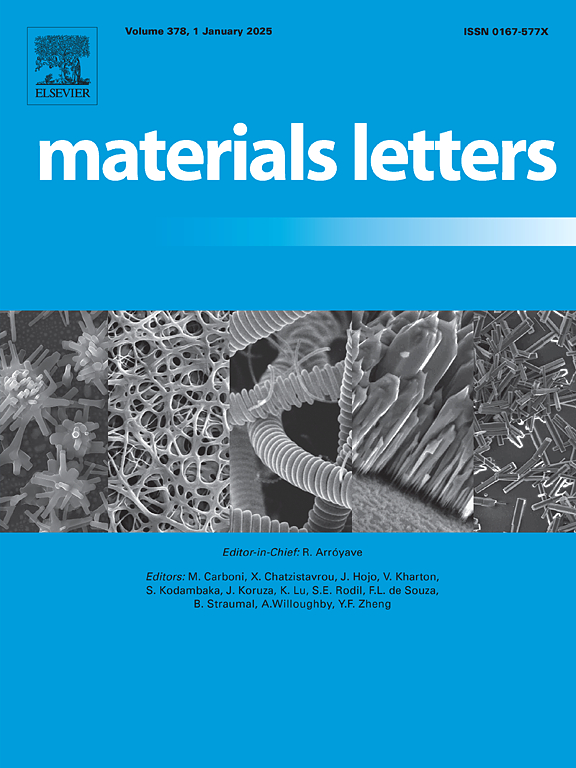Effect of quinoline extraction temperature on mechanical properties of self-sintering carbon blocks prepared from green petroleum coke
IF 2.7
4区 材料科学
Q3 MATERIALS SCIENCE, MULTIDISCIPLINARY
引用次数: 0
Abstract
Binderless self-sintering technology using green petroleum coke (GPC) as raw material is a convenient, efficient and cost-effective approach for preparing carbon graphite materials. However, it becomes difficult to get high-performance and high-yield carbon blocks as GPC contains a large number of small molecule compounds, which will volatilize from green body during the self-sintering process, resulting in pores and microcracks defects. Herein, we propose quinoline extraction at different temperatures to remove low molecular weight compounds, i.e., quinoline soluble fraction, from GPC. The quinoline-modified GPC demonstrates enhanced thermal stability and molecular uniformity, facilitating better carbonization, even though the quinoline soluble fractions at different temperatures mainly exhibit differences in solubility. The obtained carbon blocks C-GPQ-90 demonstrates highest flexural strength (1.71 times) and compressive strength (1.73 times) than pristine GPC counterparts due to the lower porosity, the more compact microstructure, and the smaller graphite crystallite. The current approach offers an important platform to improve the mechanical properties and microstructure of the GPC products.
喹啉萃取温度对绿色石油焦自烧结炭块力学性能的影响
以绿色石油焦(GPC)为原料的无粘结剂自烧结技术是制备碳石墨材料的一种方便、高效、经济的方法。然而,由于GPC中含有大量的小分子化合物,这些小分子化合物会在自烧结过程中从坯体中挥发出来,导致气孔和微裂纹缺陷,因此很难获得高性能高产能的碳块。在此,我们提出在不同温度下提取喹啉,以去除GPC中的低分子量化合物,即喹啉可溶部分。尽管不同温度下喹啉可溶组分主要表现为溶解度差异,但喹啉改性的GPC具有更好的热稳定性和分子均匀性,有利于更好的碳化。所得碳块C-GPQ-90具有较低的孔隙率、更致密的微观结构和更小的石墨晶体,具有较高的抗折强度(1.71倍)和抗压强度(1.73倍)。目前的方法为提高GPC制品的力学性能和微观结构提供了重要的平台。
本文章由计算机程序翻译,如有差异,请以英文原文为准。
求助全文
约1分钟内获得全文
求助全文
来源期刊

Materials Letters
工程技术-材料科学:综合
CiteScore
5.60
自引率
3.30%
发文量
1948
审稿时长
50 days
期刊介绍:
Materials Letters has an open access mirror journal Materials Letters: X, sharing the same aims and scope, editorial team, submission system and rigorous peer review.
Materials Letters is dedicated to publishing novel, cutting edge reports of broad interest to the materials community. The journal provides a forum for materials scientists and engineers, physicists, and chemists to rapidly communicate on the most important topics in the field of materials.
Contributions include, but are not limited to, a variety of topics such as:
• Materials - Metals and alloys, amorphous solids, ceramics, composites, polymers, semiconductors
• Applications - Structural, opto-electronic, magnetic, medical, MEMS, sensors, smart
• Characterization - Analytical, microscopy, scanning probes, nanoscopic, optical, electrical, magnetic, acoustic, spectroscopic, diffraction
• Novel Materials - Micro and nanostructures (nanowires, nanotubes, nanoparticles), nanocomposites, thin films, superlattices, quantum dots.
• Processing - Crystal growth, thin film processing, sol-gel processing, mechanical processing, assembly, nanocrystalline processing.
• Properties - Mechanical, magnetic, optical, electrical, ferroelectric, thermal, interfacial, transport, thermodynamic
• Synthesis - Quenching, solid state, solidification, solution synthesis, vapor deposition, high pressure, explosive
 求助内容:
求助内容: 应助结果提醒方式:
应助结果提醒方式:


